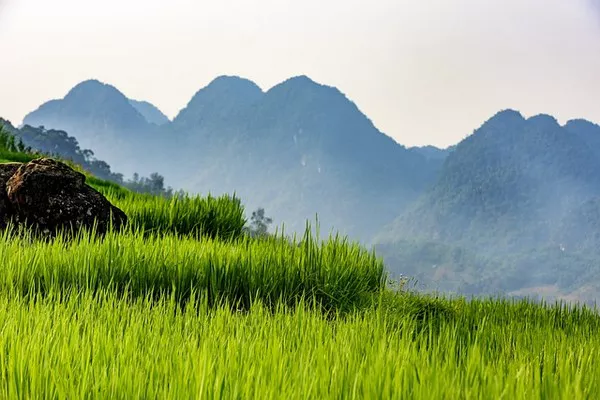The life-giving energy of sunlight is crucial for the growth and sustenance of plants. Photosynthesis, the process by which plants convert sunlight into energy, is the foundation of their survival. However, there are instances when plants may find themselves deprived of sunlight for various reasons. In this comprehensive article, we will explore how long plants can survive without sunlight, the adaptations they employ to endure such conditions, and the factors that influence their ability to thrive in darkness. By understanding these mechanisms, we can gain insights into the remarkable resilience of the botanical world.
The Role of Sunlight in Plant Life
Sunlight plays a pivotal role in the life of plants. Through the process of photosynthesis, plants utilize sunlight to convert water and carbon dioxide into glucose and oxygen, releasing the latter into the atmosphere. This glucose serves as the primary source of energy that fuels various cellular activities, enabling plants to grow, produce flowers, and bear fruit. The absence of sunlight can disrupt this vital process and lead to adverse consequences for plant health.
Plant Adaptations for Low Light Conditions
Plants have evolved a myriad of adaptations to cope with low light conditions and periods of reduced sunlight. One such adaptation is the elongation of stems and leaves towards the available light source, maximizing their exposure to the sun. This phenomenon, known as phototropism, ensures that plants can harness as much light energy as possible, even in shaded environments.
Additionally, plants may alter their leaf structures to optimize light absorption. Some species develop larger, thinner leaves with larger surface areas to capture more sunlight, while others have specialized adaptations, such as shade leaves, which allow for efficient light absorption in dimly lit surroundings.
The Limits of Plant Survival Without Sunlight
While some plants can tolerate low light conditions for extended periods, they cannot survive indefinitely without sunlight. The duration of survival varies among plant species, with shade-loving plants having a higher tolerance for reduced light levels compared to sun-loving species.
Generally, most plants will begin to show signs of stress and decline if deprived of sunlight for several weeks or months. As the lack of sunlight disrupts photosynthesis and depletes the plant’s energy reserves, growth will slow down, and leaves may turn yellow or drop off. If the plant does not receive adequate sunlight within a reasonable timeframe, it may eventually perish.
Factors Influencing Plant Survival in Darkness
Several factors influence the length of time a plant can survive without sunlight. One crucial factor is the plant’s inherent adaptability to low light conditions. Shade-tolerant plants, such as ferns and certain tropical species, have evolved mechanisms to thrive in dimly lit environments and can endure longer periods of reduced sunlight.
The plant’s energy reserves and nutritional status also play a vital role. If a plant has stored sufficient energy reserves, it can utilize these reserves during periods of low light to sustain its metabolic activities. Adequate nutrition from the soil, supplemented by stored nutrients, enables plants to maintain vital functions even when light is limited.
Moreover, environmental factors such as temperature and humidity can influence a plant’s ability to survive without sunlight. Cold temperatures can slow down a plant’s metabolism, allowing it to conserve energy, while high humidity can help retain moisture, reducing water loss through transpiration.
Plant Survival Strategies in the Absence of Sunlight
In situations where plants face prolonged darkness or complete absence of sunlight, they may employ various strategies to conserve energy and ensure survival. One such strategy is dormancy, where the plant enters a state of reduced activity to conserve resources. During dormancy, the plant may shed leaves, halt growth, and reduce metabolic processes until favorable conditions return.
Another survival strategy is etiolation, a process characterized by rapid elongation of stems and leaves in search of light. While this adaptation may lead to weak, elongated growth, it allows the plant to reach light sources quickly and increase its chances of survival until sunlight becomes available.
Human-Induced Darkness and its Impact on Plants
In urban environments, human activities, such as construction, may inadvertently lead to the creation of shaded areas where sunlight is limited or blocked entirely. This human-induced darkness can have significant implications for the health and survival of nearby plants. Urban planners and landscape designers must consider the potential impact of shading on vegetation and implement strategies to mitigate adverse effects.
Conclusion:
Sunlight is the lifeblood of plants, fueling the remarkable process of photosynthesis that sustains their growth and vitality. While some plants have evolved to thrive in low light conditions, most species rely on sunlight for survival and will show signs of stress if deprived of it for prolonged periods. Understanding the adaptations and strategies that plants employ to endure darkness provides us with insights into the resilience and tenacity of the botanical world.
As stewards of the environment, we must be mindful of the impact of human activities on plant life. By preserving natural habitats, implementing sustainable urban planning, and protecting green spaces, we can ensure that plants continue to bask in the life-giving embrace of sunlight and contribute to the health and beauty of our planet.


